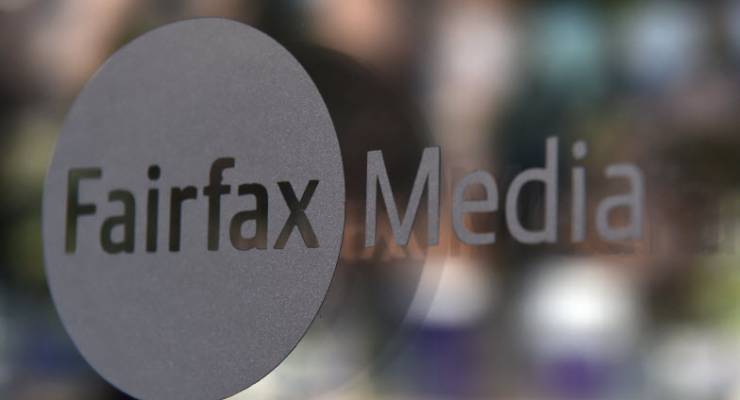
A Fairfax restructure could cut up to 25% of metropolitan editorial staff, as the media giant tries to cut $30 million from its editorial budget next year. A proposed strategy sent to staff today has done nothing to allay fears of mass redundancies looming over newsrooms since staff came across a document outlining a restructure last week.
And it all still might not be enough to save the struggling business.
Staff will be briefed today and tomorrow about the proposal, which is vague on detail. The $30 million includes non-staff costs, but it’s not known what, or how many, they will be. Staff are unlikely to have many answers before the end of April, when the consultation period ends.
[More redundancies feared at Fairfax, as takeover rumours fly]
The changes will apply to the newsrooms of The Sydney Morning Herald, The Age, Brisbane Times and WA Today.
Media, Entertainment and Arts Alliance media director Katelin McInerney said in a statement:
“The announcement from the company today leaves more questions than answers. We are looking for a genuine consultation that draws on the expertise of the editorial floor and ensures any restructure enhances Fairfax core strength — its journalism.”
The proposed strategy declares that Fairfax’s focus needs to be on stories that would be widely consumed, in key areas: federal politics, state and local news, investigations, world, business and the economy, sport, and breaking news.
“We will concentrate our resources where we have a competitive advantage,” the proposal reads. “Where we do not, we will buy in or use syndicated content.”
The proposal said the non-focus topics would be covered via an “expansive contributor network and access to global media organisations”. These topics include entertainment, arts, travel, food, parenting, lifestyle and motoring.
Fairfax announced the consultation process to the ASX this morning, saying the plan would “prepare us for a stronger future”.
It comes six weeks after Fairfax recommitted to print, but that won’t be easy, even with these cuts to be mostly delivered in the 2017-18 financial year.
[Michael West among Fairfax redundancies]
The half-year report to the end of December, released on February 22, shows the metro business lost 16.6% in ad revenues and circulation income was static because the 22% jump in digital subscriptions was “largely offset” (the company’s words) by lower print sales. The company’s events business recorded a small 2.5% rise in revenue for the half year.
That produced an 8.2% slide in revenue for the business to just over $279 million and a much larger 12.2% slump in earnings before interest, tax, depreciation and amortisation to $27.7 million. The $30 million cut is aimed at stopping that figure from becoming a loss in 2017-18. The division had costs of around $251 million in the half year.
[‘Sexy Gandalf’ ushers in new dawn of clickbait wizardry at Fairfax]
In the February 22 financial statement (and Domain float announcement), Fairfax CEO Greg Hywood gave us the reasons for this latest round of cuts (and it’s not about rightsizing the metro business for a life after Domain, as today’s announcement attempts to suggest).
The company’s revenue is still sliding. Hywood said on February 22:
“Trading in the first two weeks of February saw revenues around 6% below last year. Trading in January saw revenues around 10% below last year in a slower than usual start across the media industry.”
If revenues keep falling by 6% to 10% over the rest of the financial year to June, it could quite easily cut gross profit even further and certainly suggests that without further cost cuts, a loss will appear on the metro division’s bottom line some time in early 2018.
In other words, Fairfax is still reacting to what is happening to the revenue line, not setting up the division (and will the community papers business be the next to take another round of cuts?) to be able to survive without Domain. There could be good news from NZ, where the merger proposal with APN’s NZME might have a better chance of succeeding with conditions that will deliver around A$53 million to Fairfax if the merger happens. But greedy shareholders will want that, not the Australian newspapers, where it should really be re-invested to help ensure their future.
Today’s announcement is a sign that when Domain is spun out, Fairfax could be on the way to exiting newspapers involuntarily.








Oh dear. Leaving the field open to Moloch…
The weekday Age is already so light for news that it’s not worth picking up. The weekend Age is full of Sydney-centric stories that I refuse to read it. In the words-as-emoji of a Trump tweet; “sad”. They might as well drop back to a single national masthead, AFR.
It’s nearly all Sydney-centric. The business pages almost always use examples of Sydney firms, Sydney consumers etc.
So much pessimism, but Fairfax is the only media outlet still carrying out outstanding investigative journalism. Almost every other day they shine a light on yet another dodgy fed, state, or local politician, or a crooked business person. We would be far worse off as a country without them. Eddie Obeid and Ian Macdonald would probably still be ministers if Murdoch’s rags were all we had. To me this announcement makes some sense — I’d much rather they focus their resources on where they can have the biggest impact, leaving all the fluff to syndication.
Say hello to uncle Hywood for us.
The SMH is 90% fluff these days anyway
Nonsense, in the print edition it most definitely is not fluff.
Good riddance. For years Fauxfux has been like one of those ancient dinosaurs, dead but still moving, even if only from necrotic worms.
The only loss will be the wonderful cartoonists, Wilcox, Tanberg & Moir and the xword/puzzle page.